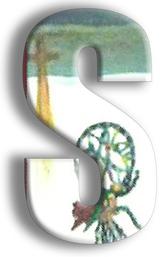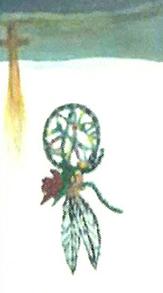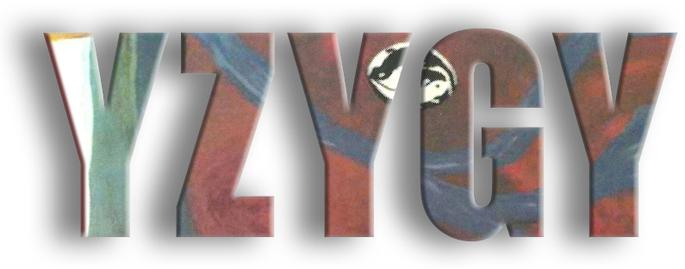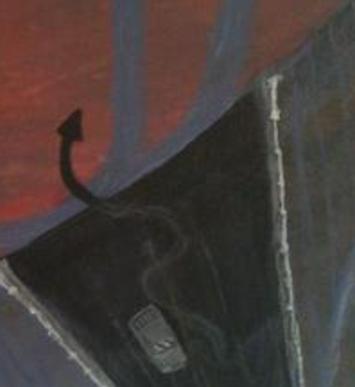MEMOIR LOGO CONCEPT: The aleph and a Sufi mystic inspired my creation and design of the syzygy logo, which I initially based on the symbolism of the yin and yang.
But the concept expanded when I first saw the aleph in Judith Cornell’s
Mandala Healing Kit, My inexplicable attraction to it led me to incorporate it into my logo before I knew what it meant.
I later read that the “Aleph (the first letter of the sacred Hebrew alphabet) embodies the primordial, divine potential of the universe. ... Aleph contains all the universe’s potential and all of its emptiness simultaneously. Aleph represents a dynamic process of movement from unity to diversity and back to unity,” Jennifer Judelsohn, Songs of Creation.
And the mystic poet Rumi inspired me to use the fire and water concept after I read The Question. Here is an excerpt:
“The presence is there in front of me. A fire on the left, a lovely stream on the right.
One group walks toward the fire, into the fire. Another toward the sweet flowing water.
No one knows which are blessed and which are not.
Whoever walks into the fire appears suddenly in the stream.
A head goes under water, and that head pokes out of the fire.”
LOGO ART: Cropped fire and water images from Free Images.
LOTUS LOGO: In spiritual and religious literature, “the lotus is a symbol for the macrocosm and the microcosm, the universe and man. The lotus represents the divinity of the cosmos as well as the divinity of man.
The lotus is the center of the infinite, omnipresent consciousness which connects with the consciousness of the universe. Through the intuition, one of man’s divine gifts, the spiritual student can see the infinite, omnipresent consciousness as the lotus flower within himself.”
LOTUS ART: Courtesy
Homestead, my website service provider. (Temporary art while I design of my own lotus logo.)
TO DOWNLOAD FREE SAMPLE CHAPTER OF SYZYGY:
THE MEMOIR
TO BUY MEMOIR
(Thru Amazon)
THE MEMOIR
CROSSING THE BRIDGE TO SELF
THE WEBSITE
THE MEMOIR
NEW!
Identify contents in Shadow to begin healing
“We carry our past with us, to wit, the primitive and inferior man with his desires and emotions, and it is only with an enormous effort that we can detach ourselves from this burden. If it comes to a neurosis, we invariably have to deal with a considerably intensified shadow. And if such a person wants to be cured it is necessary to find a way in which his conscious personality and his shadow can live together."
C. G. Jung's “Answer to Job” (1952), in CW 11: Psychology and Religion: West and East. P.1
According to Carl Jung’s theory
of the structure of the psyche, our shadow contains repressed feelings, thoughts, memories, and experiences—often dating back to childhood—that were so painful that we unconsciously buried them. That might seem like a good thing. After all, most of us do not want to suffer. Besides, we can hear the voice of a parent or a spouse or a sibling scoffing and telling us to just get over it when we bring up something painful from our childhood. But our Shadow demands to be heard, demands to be reckoned with and, in my case, appears in angry outbursts and in unexpected ways that cause me to act and react in ways that seem contrary to what I think I believe or feel—and in total contradiction to how I want others to perceive me.
Anger is just one example of the countless ways in which your shadow may express itself. Trying too hard to please others or trying to control others or bullying or abusing others, or being too submissive, or allowing others to abuse you can all be manifestations of your Shadow. Until we bring the contents of the Shadow to consciousness and begin the healing process by integrating our shadow aspects with what is here and now, the shadow will wreak its havoc in our daily lives whether we are aware of it or not.
But how can we begin to integrate or heal something we don’t even know exists, much less identify? That’s what I wanted to know. Fortunately, in early 2015, I discovered the work of spiritual catalyst Teal Swan, who teaches various techniques in what is called “Shadow Work” to help us bring to the surface what lies seemingly dormant in the Shadow.
One of the first techniques I learned from Teal is called “rooting out a core belief,” which revealed to me the cause of my extreme emotional pain, which had nothing to do with the fact that a coworker excluded me from lunch or tried to micromanage me when our boss was out. I was often so upset that I found myself on the verge of tears at work sometimes all day.
Why!? It’s ludicrous that I allowed something so minor to upset me to that degree. After all I did not even want to go to lunch with him and his buddies. I don’t even like fast food. Plus I brought my own lunch. Besides, even if he had invited me to go, I would have had to decline because I can’t afford to go out for lunch anyway! And when he tries to tell me what to do or how to do it, I cringe and become agitated. He smirks, adjusts his halo, and tells me that he was just trying to help.
I knew I was way overreacting to these situations—at least I thought I was until I learned from Teal that there is no such thing as overreacting. She said that we react in exact accord to our past experiences, even if we do not consciously make the associations. So in an effort to understand what was really upsetting me, to discover the core belief that was triggering these seemingly out-of-proportion emotions, I tried Teal’s technique: How to find a core belief.
FINDING A CORE BELIEF
The next time my coworker upset me, I took a timeout to write down how being upset felt in my body. I noticed that I instantly go into defense mode, in which my whole body rebels. My hair stands up on end. I feel like a cat inside, with its fur up and its back arched, ready to pounce. I am sick to my stomach and a huge lump in my throat hurts when I swallow. I can feel all the little angry cells collecting in my muscles and rising to my defense. The tension in every muscle of my body feels like poison. I want to yell at him and slam him against a wall, but of course I can’t. I then explored my feelings by alternating these two questions: “What does that mean to you?” and “Why would that be so bad (assuming that were true)?”
Q. Why are you so upset about your coworker excluding you from lunch, and then on his way out of the door, told you what your next priority should be—as if you didn’t know?
A. It implies that he thinks I am an idiot or a slacker.
Q. Assuming that were true, why would that be so bad?
A. Because my coworker takes on this attitude like he is superior to me in my boss’s absence.
Q. Assuming that were true, why would that be so bad?
A. Because if he thinks he is superior to me then it stands to reason that he thinks I am inferior.
Q. Assuming that were true, why would that be so bad?
A. Because it pisses me off. How dare he? I am obviously smarter than him in many respects, but I have caught him rolling his eyes at me behind my back.
Q. What does that mean to you?
A. It insults me. But I suddenly realize that I think I am better and smarter than him.
Q. What does that mean to you?
A. Throughout my life I have put on airs like I am better than others, even though I have always known deep down that I’m not.
Q. What does that mean to you?
A. It means that I put up a shield of superiority as a way to protect myself.
“Taking it in its deepest sense, the shadow is the invisible saurian tail that man still drags behind him. Carefully amputated, it becomes the healing serpent of the mysteries. Only monkeys parade with it.”
Jung, The Integration of the Personality, 1939.
Q. Assuming that were true, why would that be so bad?
A. Because the shield is a lie.
Q. And what does that mean to you?
A. It means that when my coworker excludes me or tries to micromanage me, I feel threatened that he might break down my shield and realize I am not really superior.
Q. And what does that mean to you?
A. It embarrasses me because I realize that all the while I had up my phony front of superiority, I was bringing my coworker’s attack on myself because my coworker didn’t appreciate that I was acting as if I was superior to him either.
Q. What does that mean to you?
A. It means that putting up my shield of superiority to hide my low self esteem has backfired, and I am under attack with no protection because the fact is that under the shield there is just this stupid little, worthless little girl, who nobody cares about, who nobody wants to go to lunch with.
NAME THE CORE BELIEF YOU DISCOVERED: Under my shield, I am a stupid little, worthless little girl, who nobody cares about.
WHAT OTHER SITUATIONS TRIGGER THESE FEELINGS: Other triggers that create the very same reactions in my body are when someone doesn’t believe me, when someone refuses to validate my opinions or ideas, when someone speaks condescendingly to me, when someone treats me disrespectfully, when someone embarrasses me in front of someone else, when someone excludes me, when someone rejects me, when I am criticized, especially when I am reaching out for someone to love me and, instead, they criticize me for being too needy.
WHAT OTHER DEFENSE MECHANISMS CAN YOU IDENTIFY: In addition to responding in anger, I often find myself responding defensively and/or trying to justify my feelings or beliefs, usually in vain, at which time I then explode in anger.
THE CORE NEGATIVE IMPRINT: Through this analysis, I realized that most of my above-stated triggers point to an underlying emotion related to feelings of abandonment, which I would never have guessed because I had a mother and father throughout my childhood. But in light of this exercise I revisited some of my childhood experiences (which I had documented in my memoir), and I realized that I had been abandoned on many levels as a child, I just never thought to call it that.
BRANCH IMPRINTS: Branching from the feelings of abandonment are feelings of low self worth, also stemming from the constant verbal assault from my childhood that I am a stupid liar. (See the preface to Syzygy: The Memoir.)
REALITY CHECK (How else might you interpret this situation?): Whether real or imagined, I learned that our bodies respond to what it perceives as a threat. But your coworker might not think you are inferior at all. You are interpreting his behavior according to your past experiences, that is, through the lens of your childhood. Your coworker might have very little control in his own life, so on the rare occasion that your boss is out, he jumps at the chance to be in control. His behavior may reflect his own feelings of inadequacy and/or his desperate need to feel empowered at least temporarily rather than reflect his opinion of you at all. (Of course, this cannot be assumed since you have no way of knowing what he is thinking or what triggers him.)
RESULT: Since the very day I applied the above technique, the relationship between my coworker and I improved dramatically. Of course, it is difficult to determine how much of it is due to the change in my perception or due to my reaction, or lack of reaction, or both. By becoming aware of what I was really responding to, I can now move on to the next technique, which Teal calls “changing a core belief,” which I will demonstrate in my next shadow work installment. ♂ ♀
©1955–2019 Syzygy: Crossing the Bridge to Self. All Rights Reserved.











